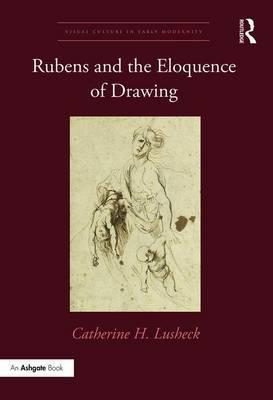Catherine H. Lusheck’s book Rubens and the Eloquence of Drawing is a new publication on Rubens’s drawings in Routlegde’s Visual Culture in Early Modernity series. Lusheck examines Rubens’s early period in Italy and the extent to which his understanding of philosophy informed his practice of creating his personal artistic language, and to give it its well-known learned touches based on Antiquity and the Renaissance.
In the introduction Lusheck presents a detailed outline of Rubens’s life and the many facets of him as draftsman, painter, teacher and diplomat. Approaching the artist as an indirect student of Justus Lipsius, she returns to Rubens as an advocate of Neostoic ideas. Rubens’s visual ideals are based on Seneca and Aristotle, on clever copying and transforming, emulation and eclecticism. The drinking in – the imbibing – of the formulae of rhetoric, in speech, writing and drawing certainly was Rubens’s strong suit. The drawings Medea Fleeing with Her Dead Children (Los Angeles, The J. Paul Getty Museum) and Kneeling Man (Rotterdam, Museum Boijmans Van Beuningen), which constitute the focus of Lusheck’s two main chapters serve to demonstrate Rubens’s humanist understanding of drawing.
Lusheck’s study is well informed and will provide a welcome introduction for new students of Rubens’s philosophical background. A well-versed reader in Rubens scholarship, however, familiar with all the standard literature on the artist, may find it harder to discover new ideas in this book. Lusheck takes into account many of the well-known facts, quotes and names from Rubens’s biography, such as the existence of the cantoor drawings in Copenhagen, the possibly clandestine copying activities of the Rubens pupil Willem Paneels, the account by the German traveler Otto Sperling, who visited Rubens’s studio and found him drawing whilst listening to Tacitus being being read to him, or the biography of Rubens’s nephew Philip that helped keep up the good memory of his uncle amongst the first other biographers Giovanni Baglione, Joachim von Sandrart, Giovanni Pietro Bellori, Roger de Piles and Arnold Houbraken.
Lusheck’s book is a very detailed, sometimes wordy introduction to Rubens’s style and its philosophical underpinnings. Her job was not an easy one: to find a new approach to Rubens’s drawings is a hard task, taking on two outstanding scholars of the past, Ludwig Burchard and Julius S. Held, as well as those of a later generation: Michael and and David Jaffé, Justus Müller Hofstede, Anne-Marie Logan, Elizabeth McGrath, Jeffrey Muller, Jeremy Wood and many others who have succeeded to decipher Rubens.
Veronika Korbei
Vienna
